How the Invention of the Sewing Machine Changed the World
We love quilt history here at SQ, and we especially love anything and everything that has to do with our best friend, the sewing machine. In this post I share with you how the invention of the sewing machine changed sewing, and the whole world, forever. Ready for a quick and entertaining history lesson?
Sidenote: If quilt history is your jam, be sure to check out some of the other posts we have on the topic (and a lot of them even include a free pattern!)
- Courthouse Steps Quilt Pattern
- Rail Fence Quilt Pattern
- Irish Chain Quilt Pattern
- Sawtooth Star Quilt Pattern
- Churn Dash Quilt Pattern
- Bear Paw Quilt Pattern
- Flying Geese Quilt Pattern
- Double Wedding Ring Quilt Pattern
- A Brief and Entertaining History of Polka Dots
- A Brief and Amusing History of Paisley
- Sunbonnet Sue: A Brief History
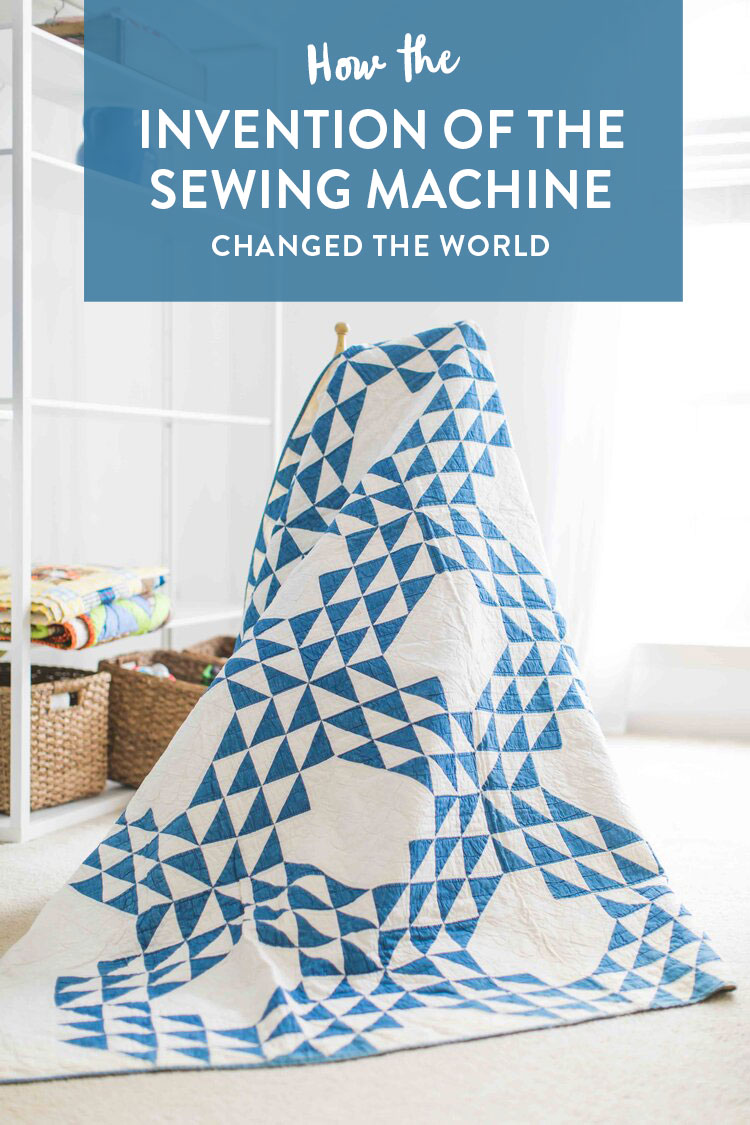
Photo cred: Stitched & Found
As you can see below, many modern sewing machines come fully equipped with tiny computers built inside of them. My sew baby, a BERNINA 770 QE, has over a THOUSAND different stitches.
A THOUSAND.
Trending patterns!
It's amazing to think about a time, not too long ago, when the only stitch pattern available was whatever you could sew with your hands. Let's travel back 150 years to learn about the exciting evolution of the sewing machine!
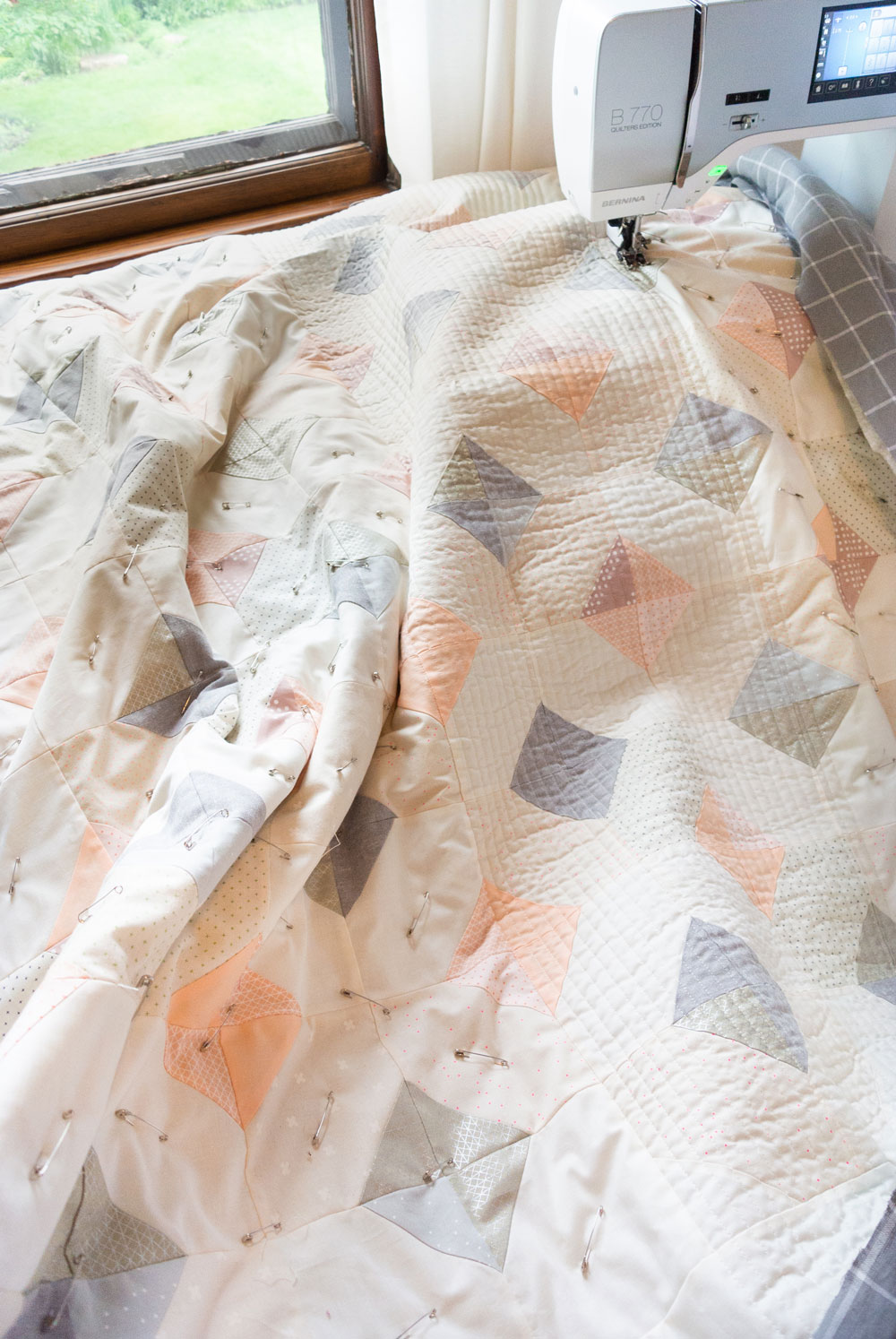
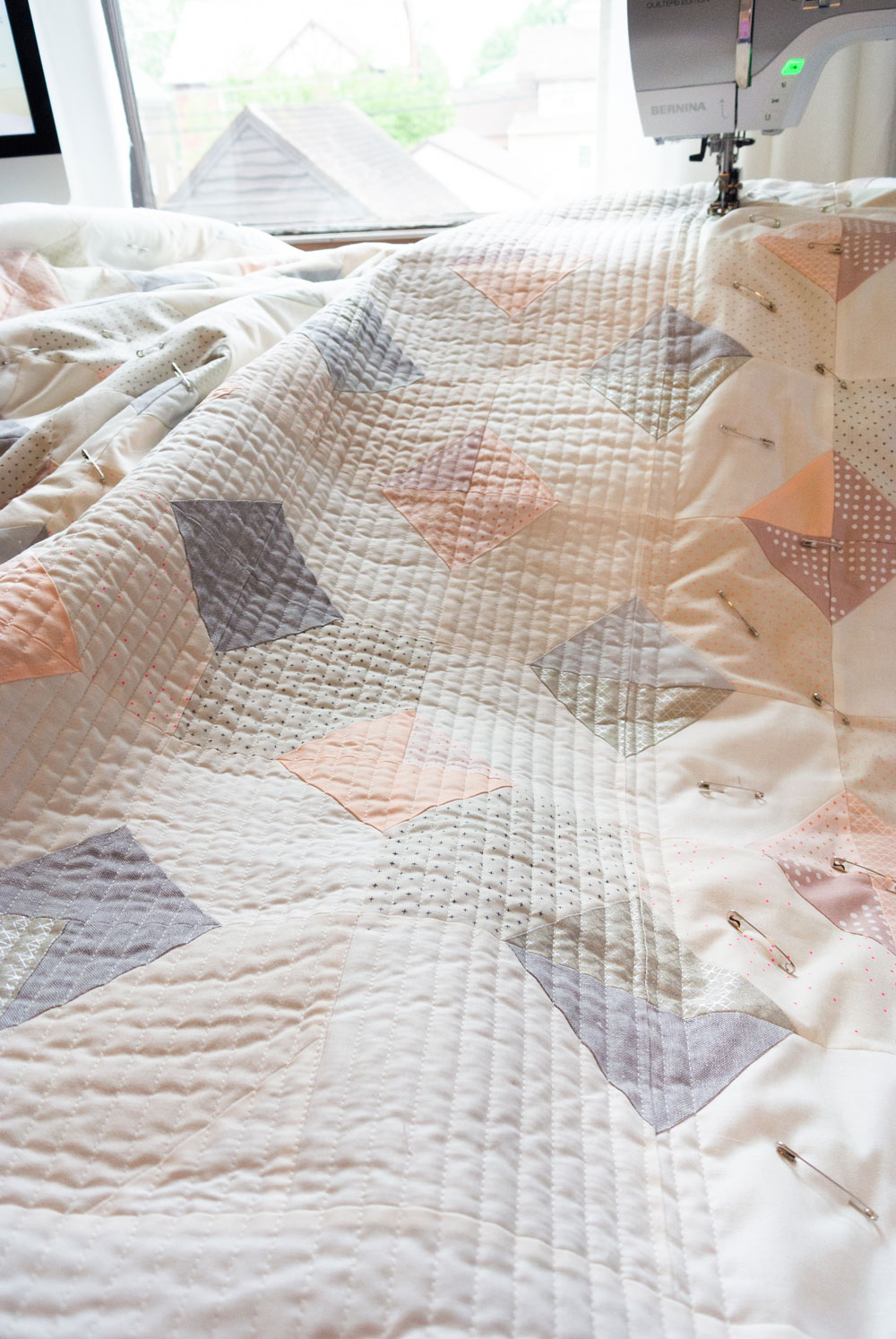
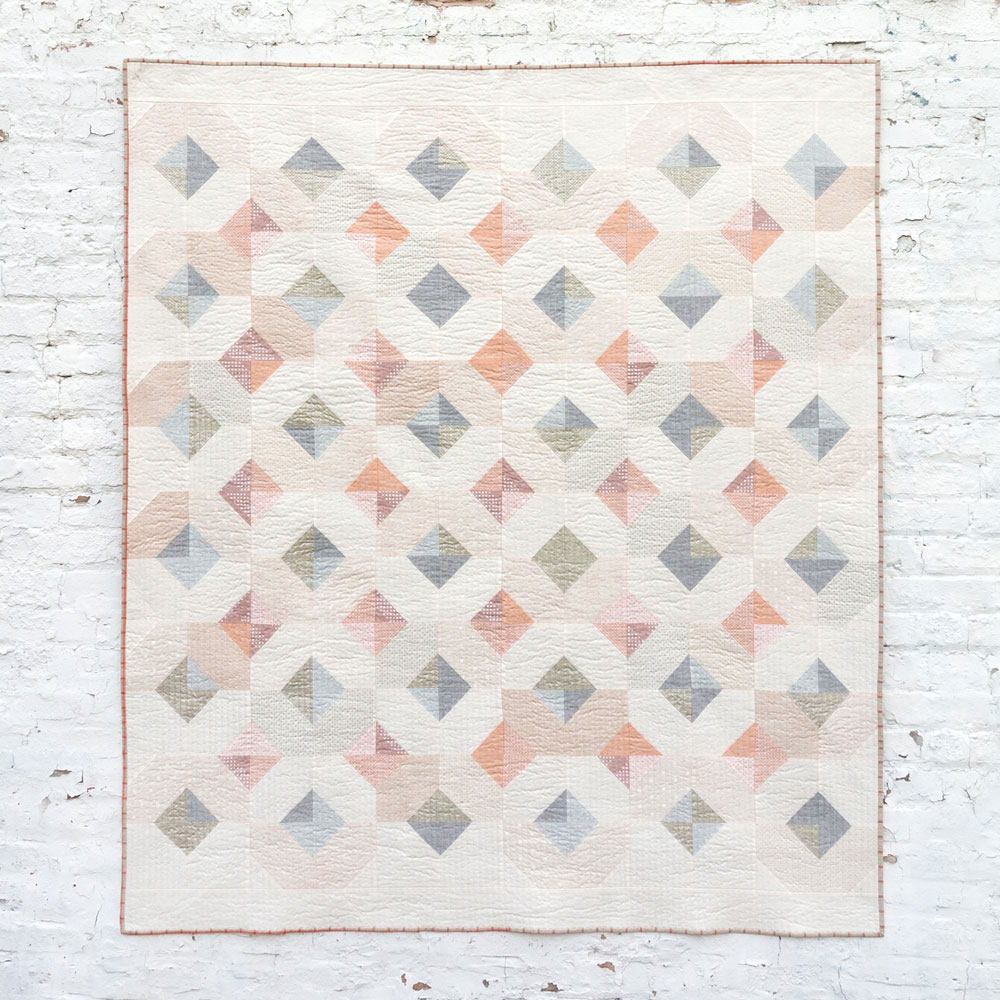
The quilt featured above is the Glitter and Glow pattern and can be purchased in the shop!
The following photos were taken by Hannah, the creator of Stitched & Found. Hannah is a photographer/vintage quilt hunter. She buys and sells beautiful quilts and takes the most fabulous quilt photos along the way.
Texting? Try Textile-ing.
If you take a look at the full timeline of quilting, you can pinpoint a stark difference between the years before the invention and mass sales of the domestic sewing machine, and the years after.
These days teens are prolific at texting, but at one point, the primary responsibility of growing girls was to learn to hand sew, so they could produce all of the family’s clothing, quilts, and basic home decor… by hand… once married.
This work was TEDIOUS. (We know it because we still do it sometimes!) Hand sewing and hand quilting are time consuming tasks that would have taken young women years to perfect, and a lifetime to put to practical use.
Enter the Invention of the Sewing Machine!
That’s why in the late 1800s after the invention of the sewing machine and domestic sewing machines became both available and affordable, sewing machine sales went threw the roof! Every family who could afford one, wanted one. I guess you could say sewing machines in the 1860s were like TVs in the 1950s and iPhones to us now. They were high tech, exciting, and new!
Even Mahatma Gandhi, who eschewed all other machines, made an exception for the sewing machine after learning to sew while in jail. He called it “one of the few useful things ever invented.”
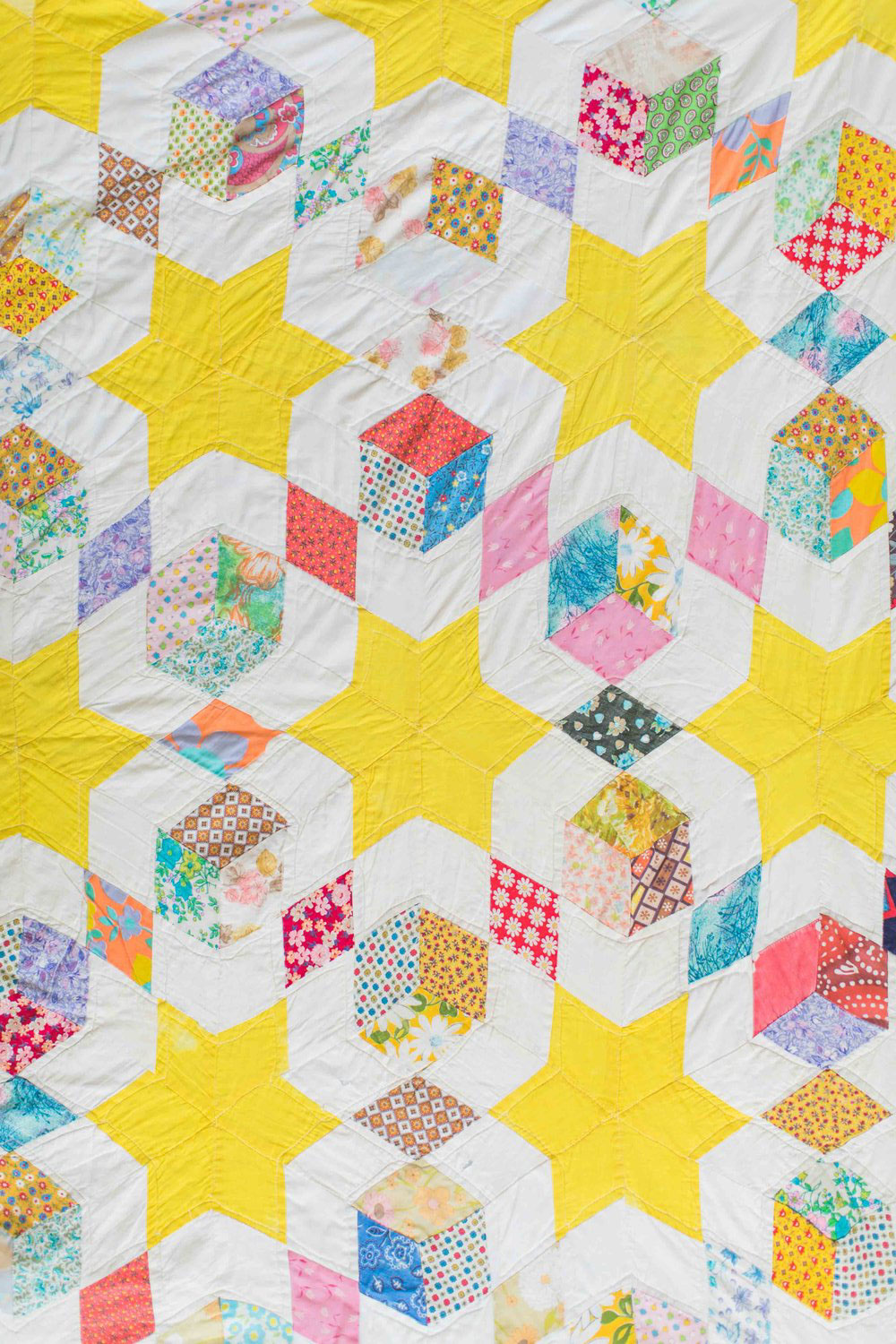
Once every household owned a sewing machine, life changed, not least of all in the quilting realm. Now there was a highly-precise, efficient machine that could stitch fabric instead of your precious hands.
It makes sense then, that hand sewing started to become a lost art. Like most skills we no longer need to survive (churning butter… writing cursive…) the mastery of the technique began to fall by the wayside. Women now needed to master a new set of skills: manipulating the machinery that did the stitching for them.
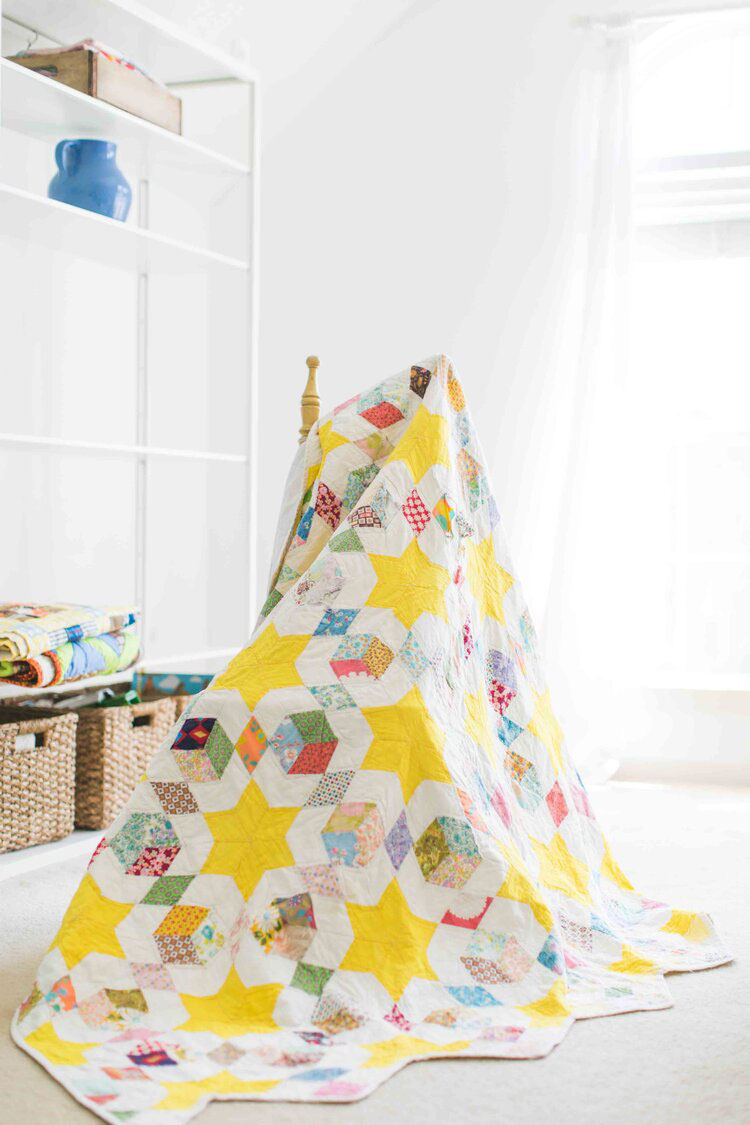
Above is a machine quilted vintage Tumbling Block quilt.
You May Also Like...
Ladies Started Getting Fancy
Because the act of quilting itself took so much less time, women could really dive head-first into hand-sewing embellishments that made their quilts unique. “Crazy quilts” made of abstract shapes sewn randomly together suddenly became a thing in the wake of quicker quilt production. It was a constant sewing party and women had more time to get creative!
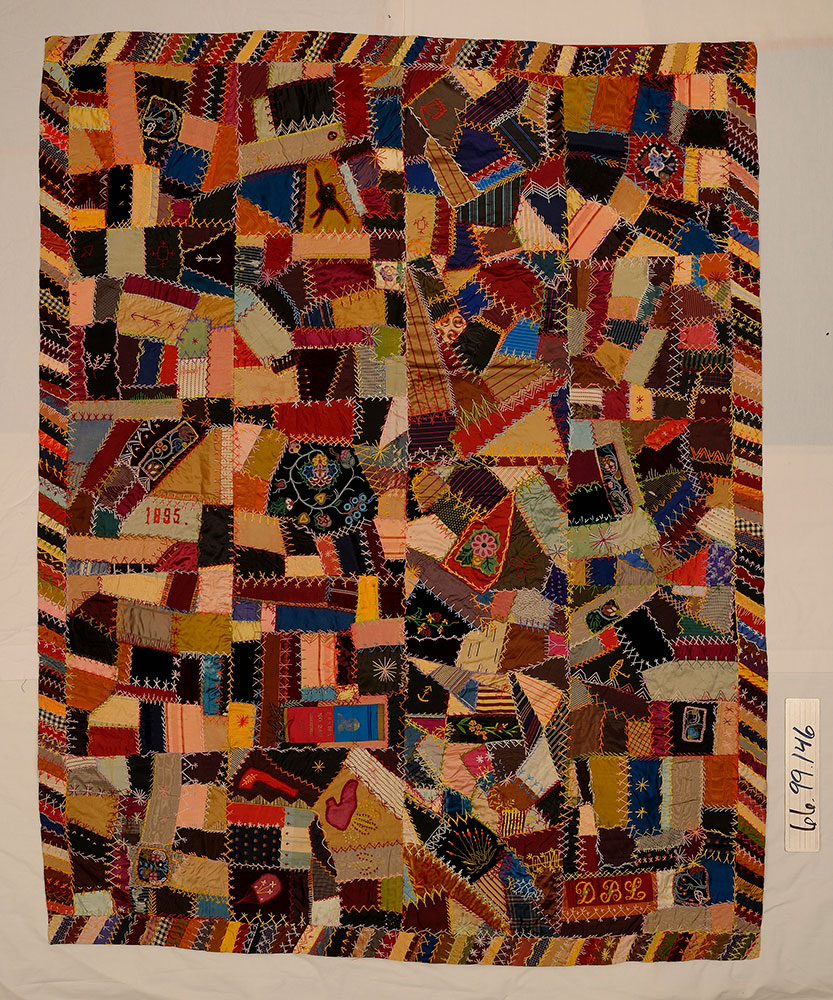
Photo cred: The State Museum of Pennsylvania
By the turn of the century, quilting was less of an obligatory household chore, and more of a business opportunity. Living the good life meant consumption more than production, and people started buying and selling quilt patterns like never before. The quilting industry turned into a consumer-facing business, and in an interesting plot twist, that made some sewists famous, household names.
During this time, craft and sewing publishing really took off. In the early 20th century, quilt patterns were being published and circulated through newspapers, magazines, and catalogs. Instead of just quilting for necessity, people began honing their specific tastes and styles.
For a more in-depth look at the evolution of quilting during the 19th and 20th centuries, check out:
- Clues in the Calico: A Guide to Identifying and Dating Antique Quilts by Barbara Brackman (she is the queen of quilt history, so any of her books will be great)
- Quilts: A Living Tradition by Robert Shaw (he also has many wonderful books on this topic)
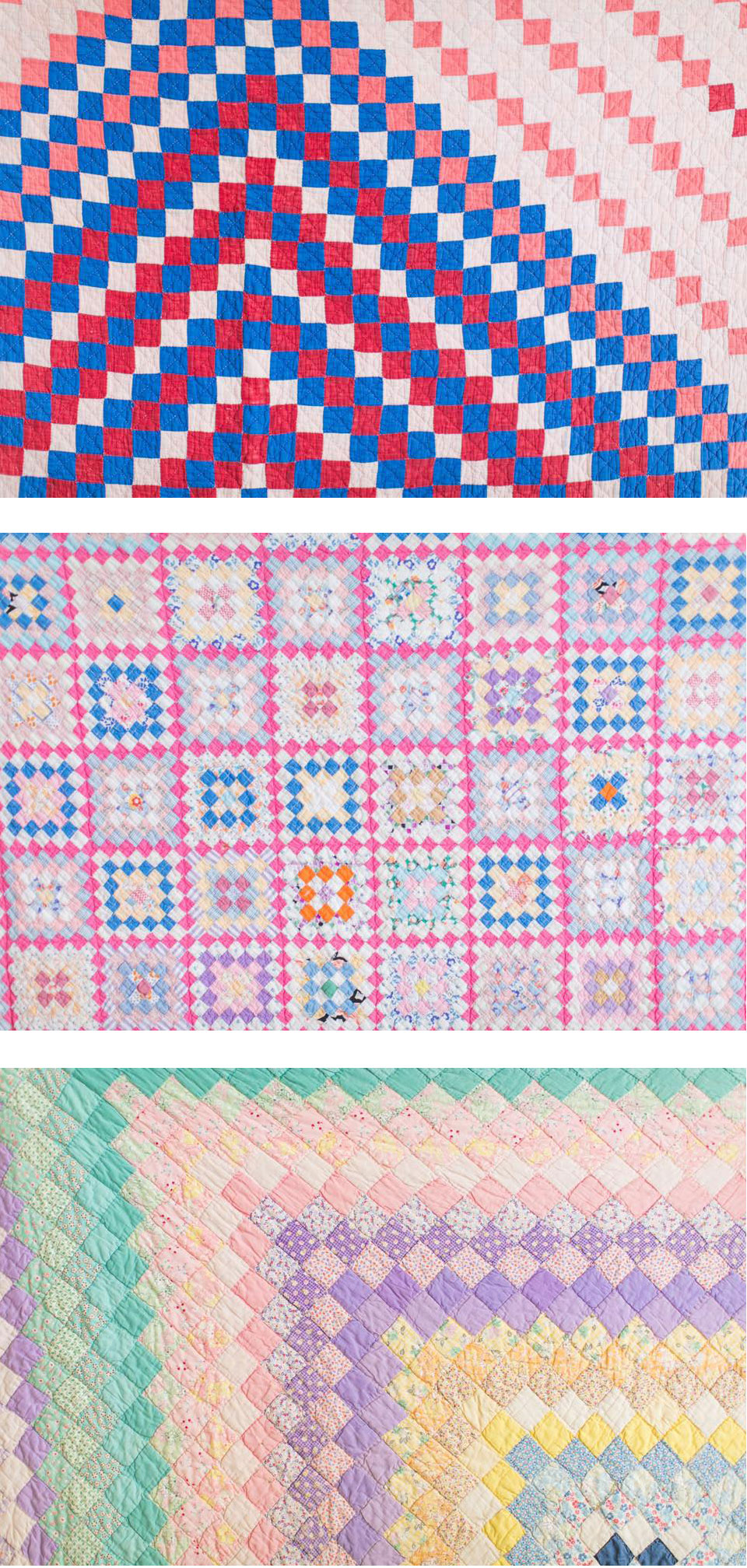
A Quilting Resurgence in the 1970s
Before the 1970s, even though most quilts were pieced with a sewing machine, quilters mostly still hand quilted their quilt layers together. By the 1950s and 60s the idea of hand quilting a quilt was...well...not appealing.
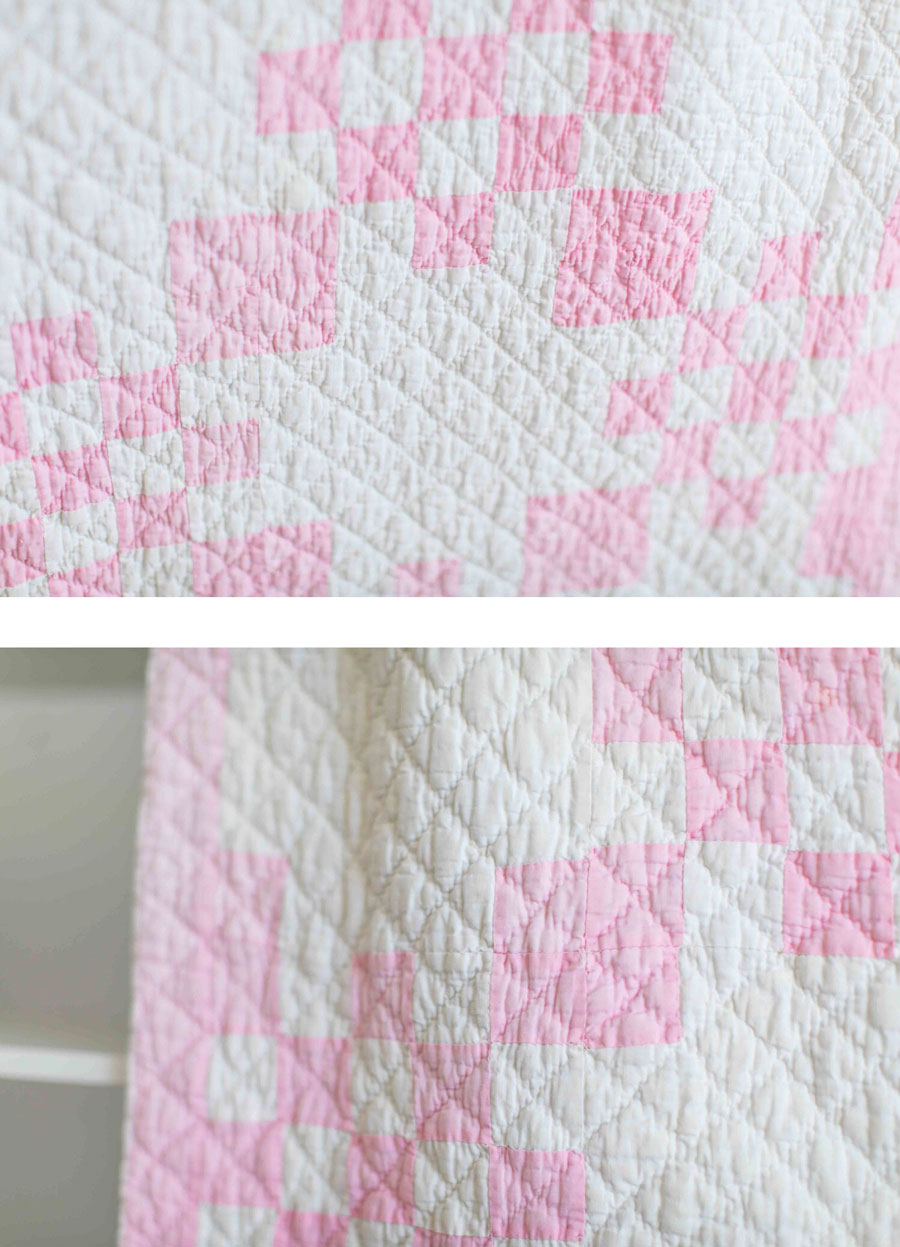
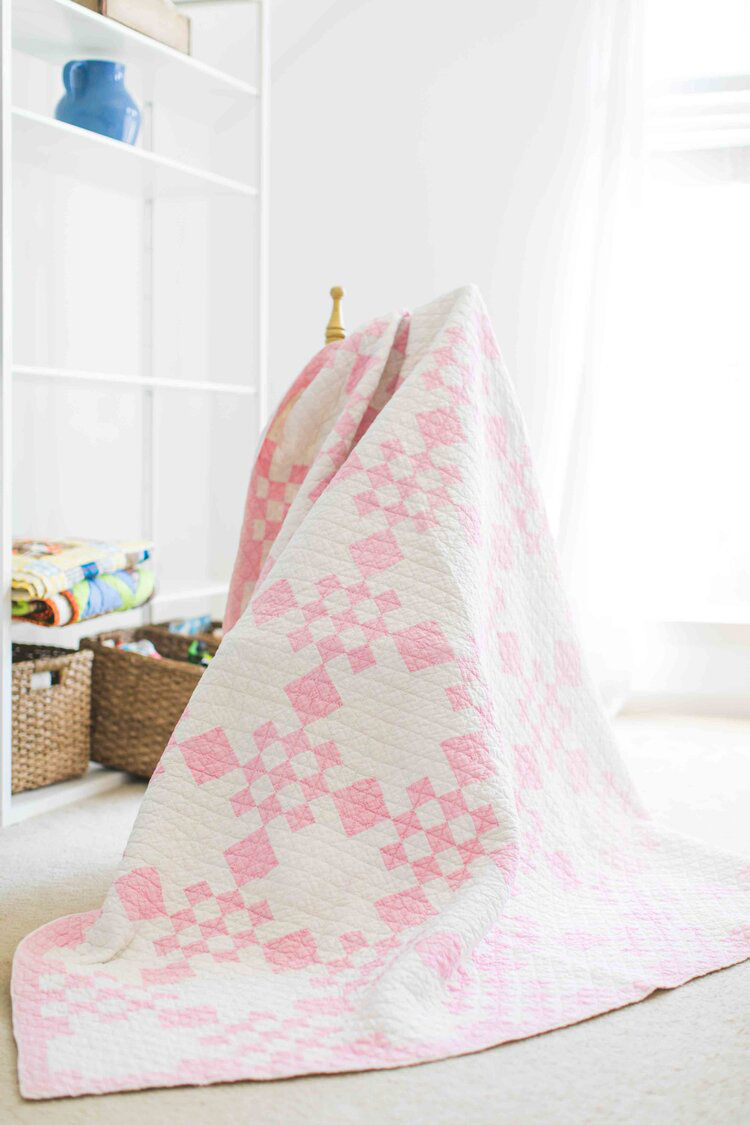
More and more women were entering the workforce and life was busy! Quilting as an artform was taking a turn, and not towards popularity, until...
...quilters realized that they could machine quilt their quilts (most of the credit for this discovery should go to the infamous Marti Michell), thus saving themselves hours and hours of sewing. Very similar to now, people were crunched for time and looking for a faster and more efficient way to sew. And they found it!
Quilting in the 21st Century
Flashforward to the present and quilting has only grown in popularity. We have fabric stores dedicated just to quilting fabric, quilting notions, and quilting books. That’s a relatively new thing! Before the 1970s fabric stores carried all kinds of fabric and mostly for apparel.
Polyester was aplenty! It was difficult to find pretty light-weight cotton that worked well for piecing a quilt. Now, that wonderful cotton is lovingly coined as quilting cotton. How nice!
These days dedicated quilters spend millions a year on kits, fabric, tools, and, of course, sewing machines. The acceleration and massive change in the quilting industry after the invention of the sewing machine is nothing short of epic.
Even though the sewing machine has enabled garment sewing, bag making and, of course, quilting, to blossom into an accessible art form for people worldwide, in my opinion, there’s still nothing like channeling your inner, pre-1850s teenager, and thoughtfully hand quilting a piece that will stick around to see yet another generation of sewing machine enthusiasts.
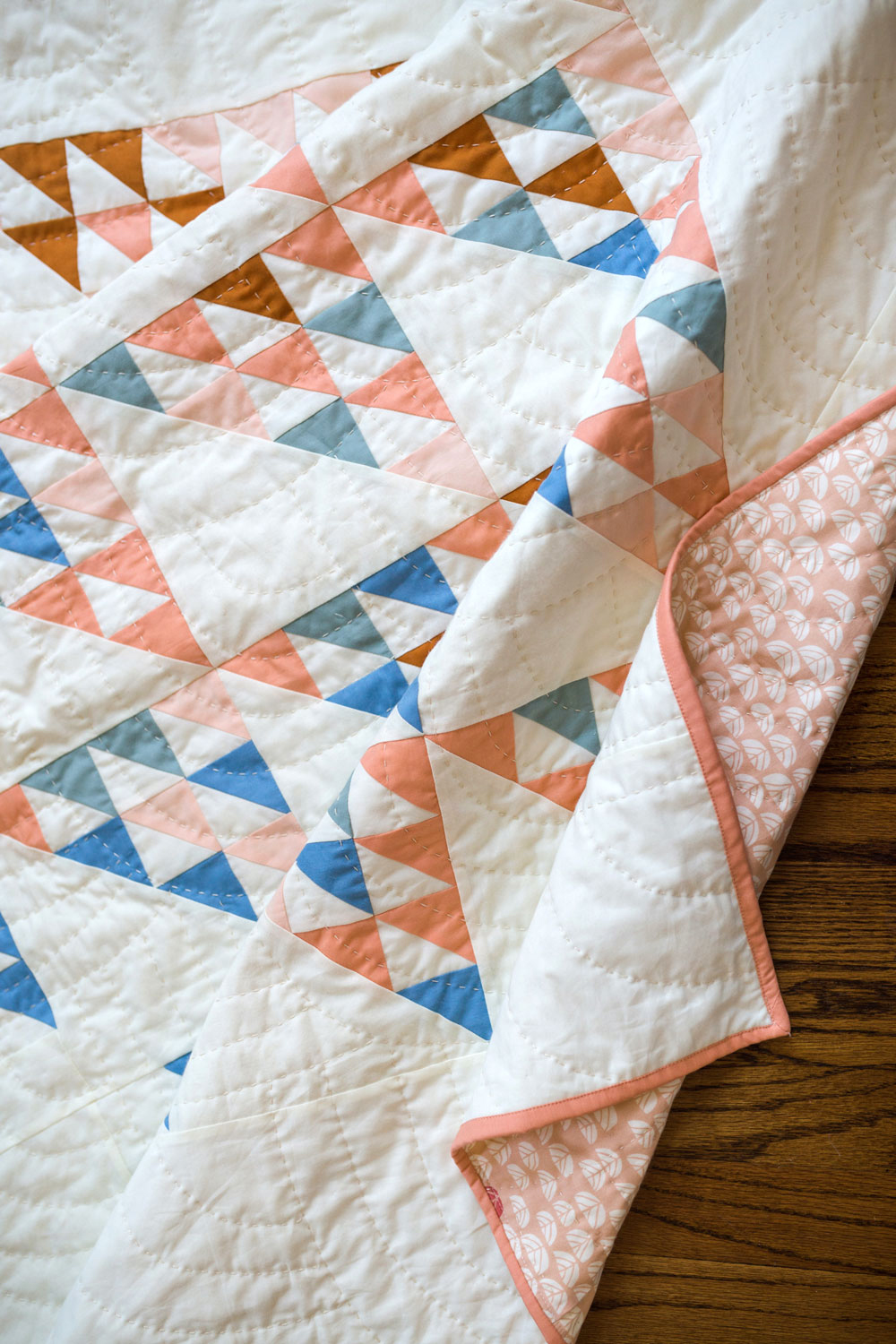
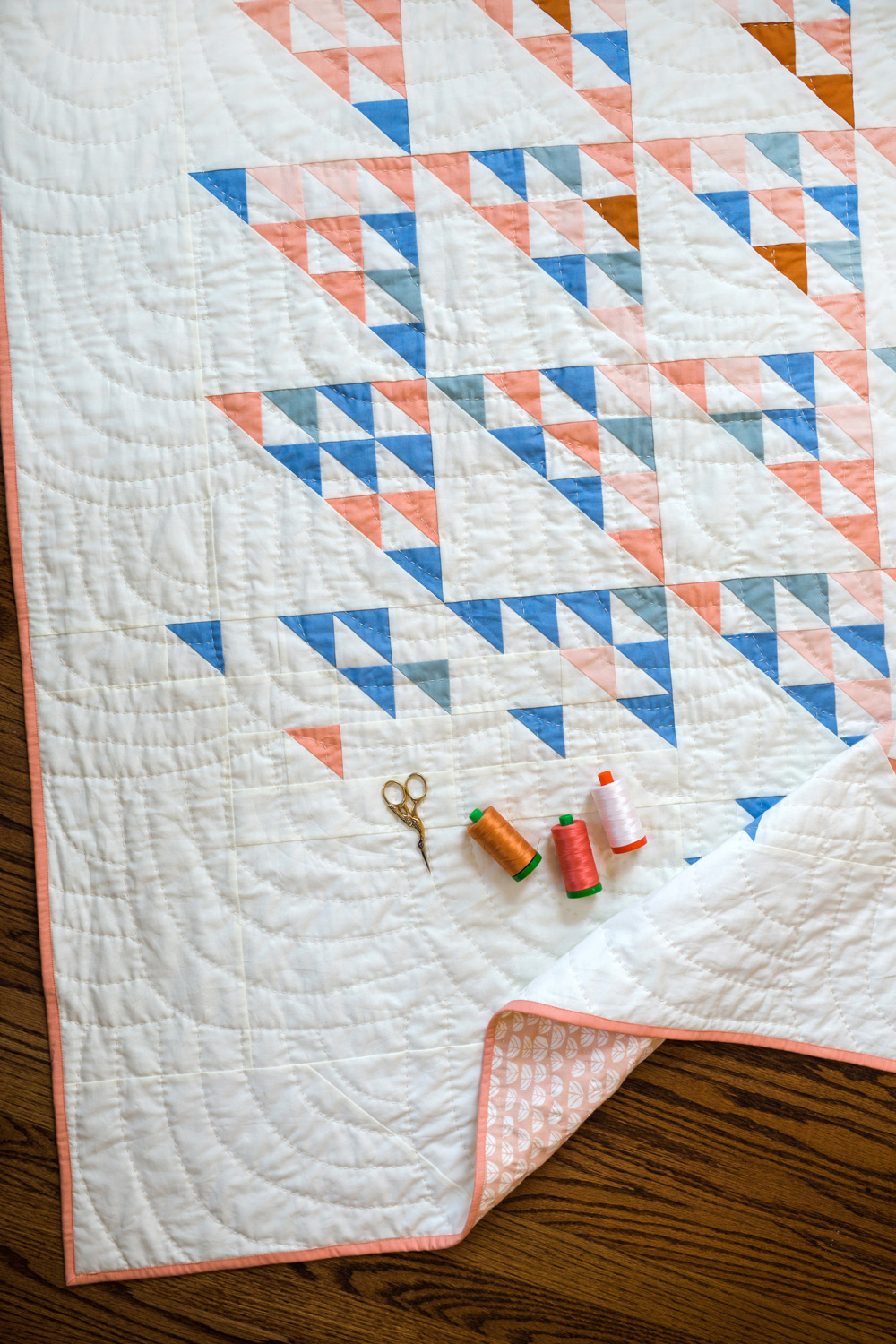
The quilt featured above is the Fly Away pattern and can be purchased in the shop!
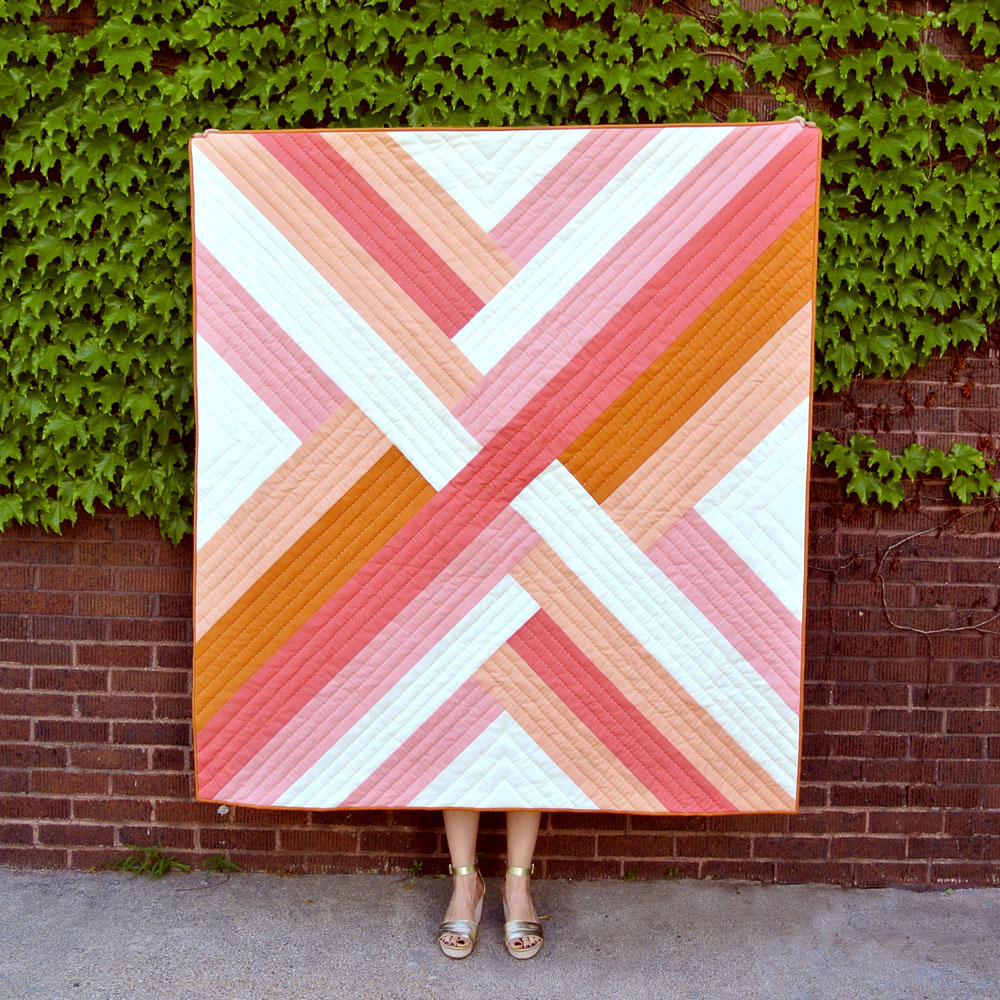
The quilt featured above is the Maypole pattern and can be purchased in the shop!
Is your sewing machine your best friend? Now that you know all about its historic journey to your sewing room, I bet you love it even more! What kind of sewing machine do you have and why do you love it? Tell us in the comments!
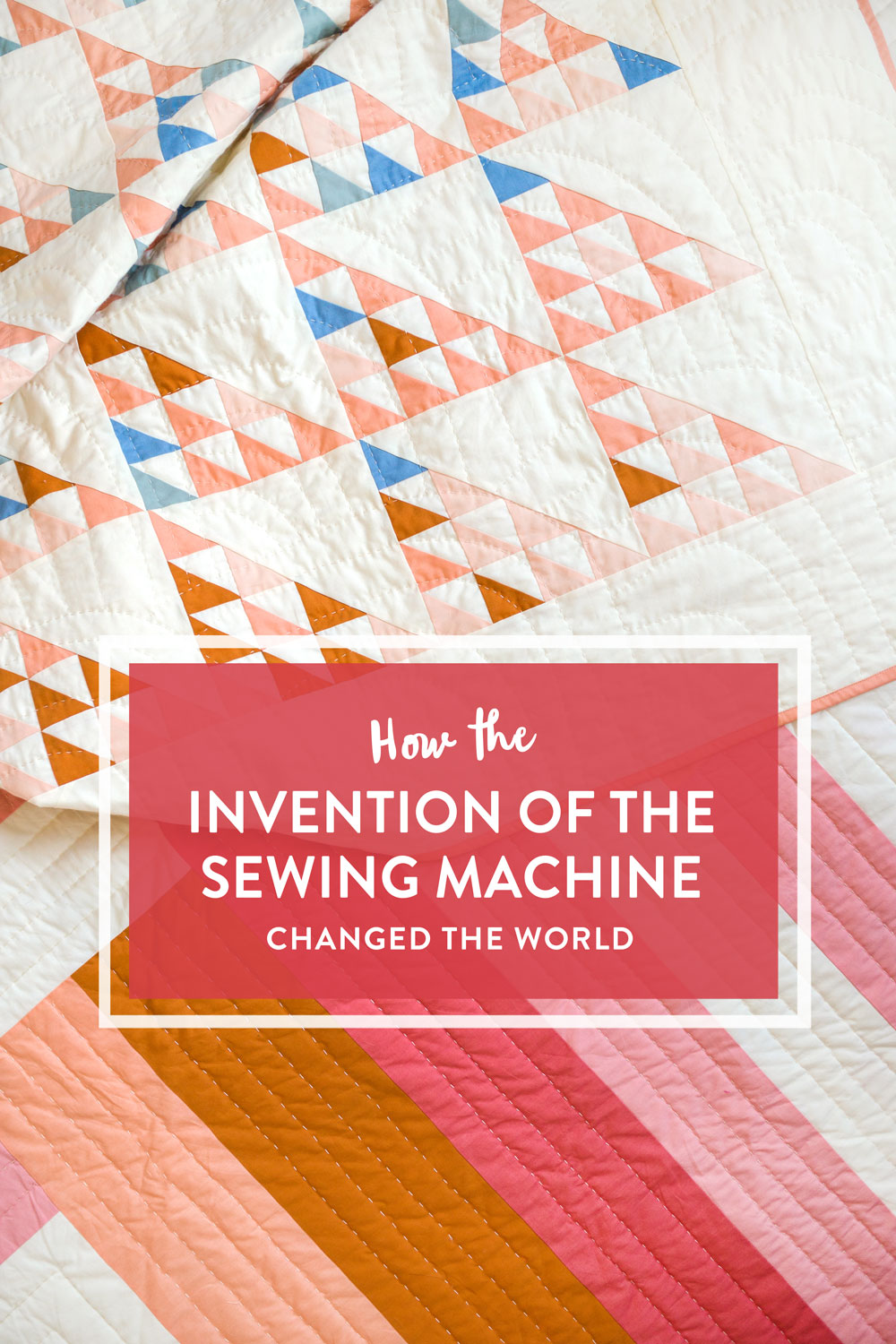
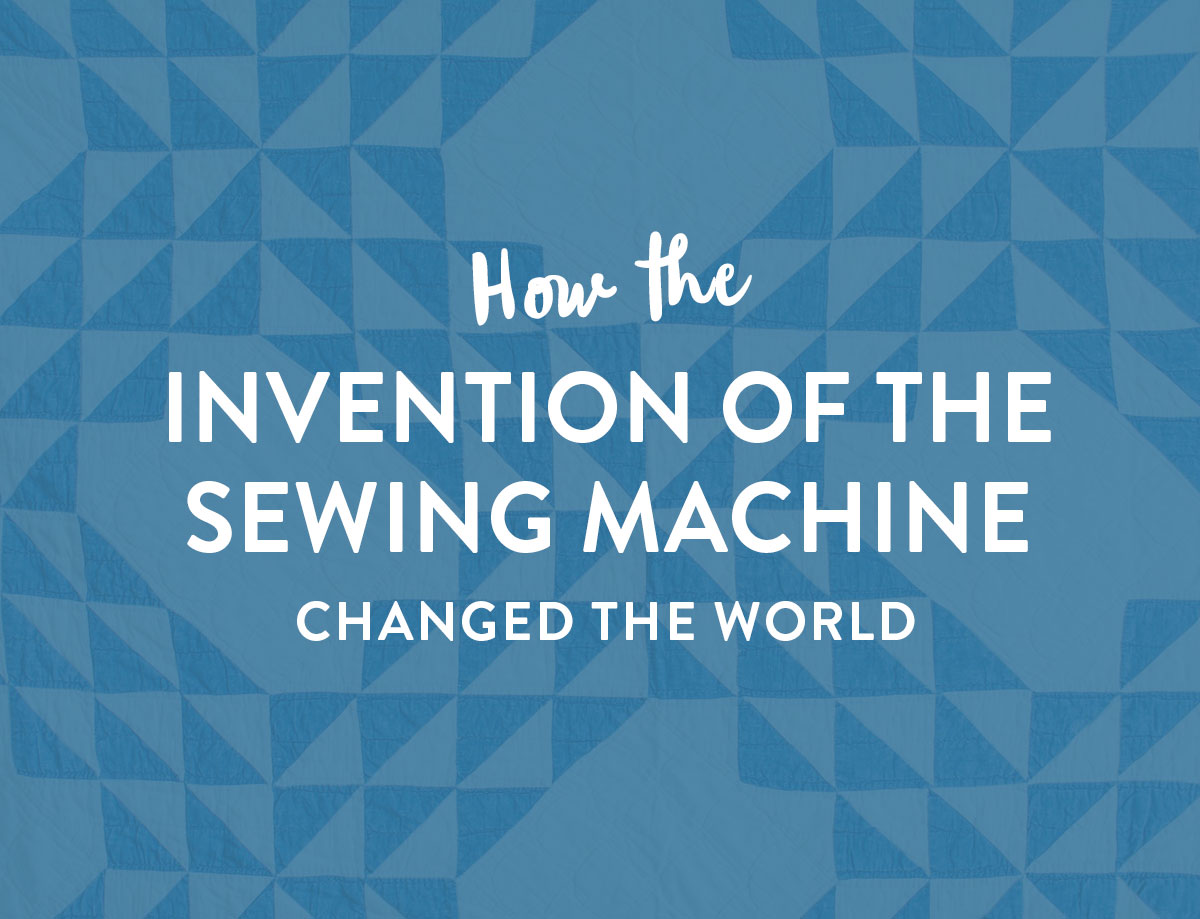
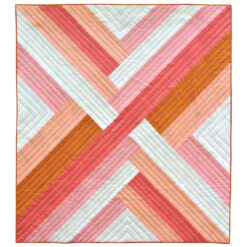
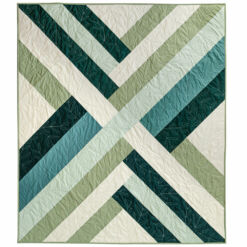
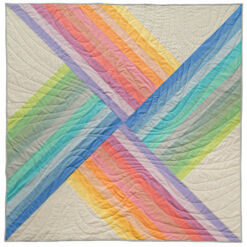
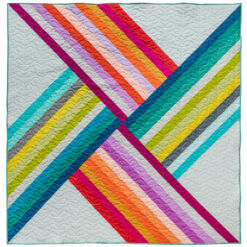
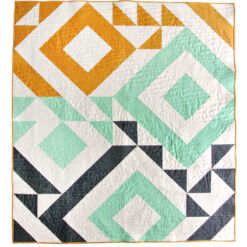
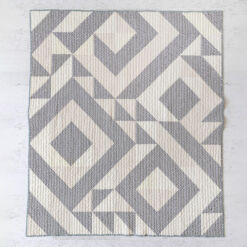
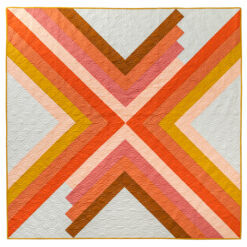
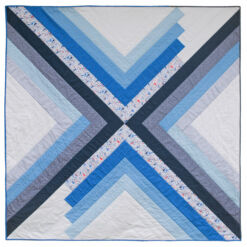
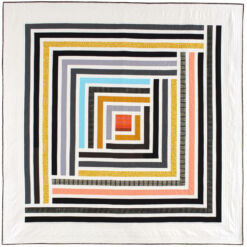
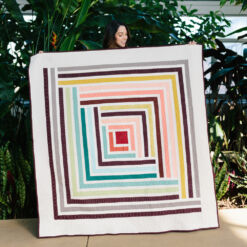
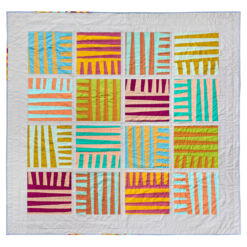
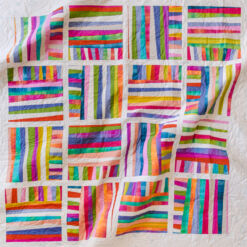
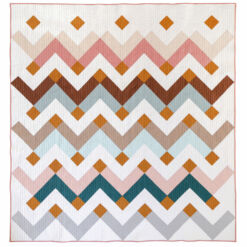
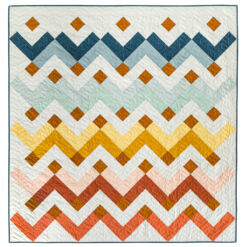
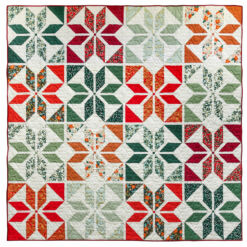
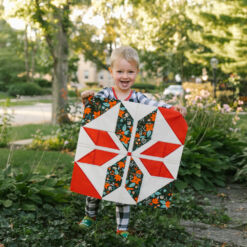
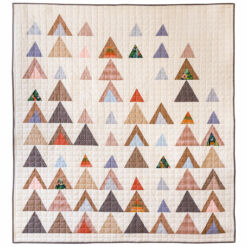
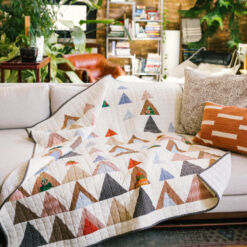
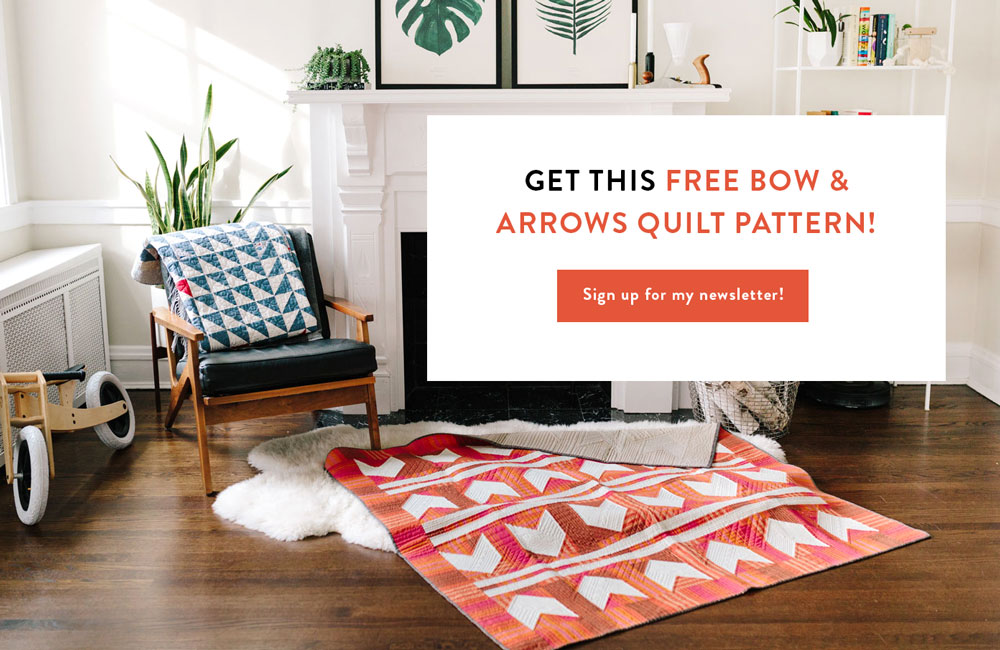
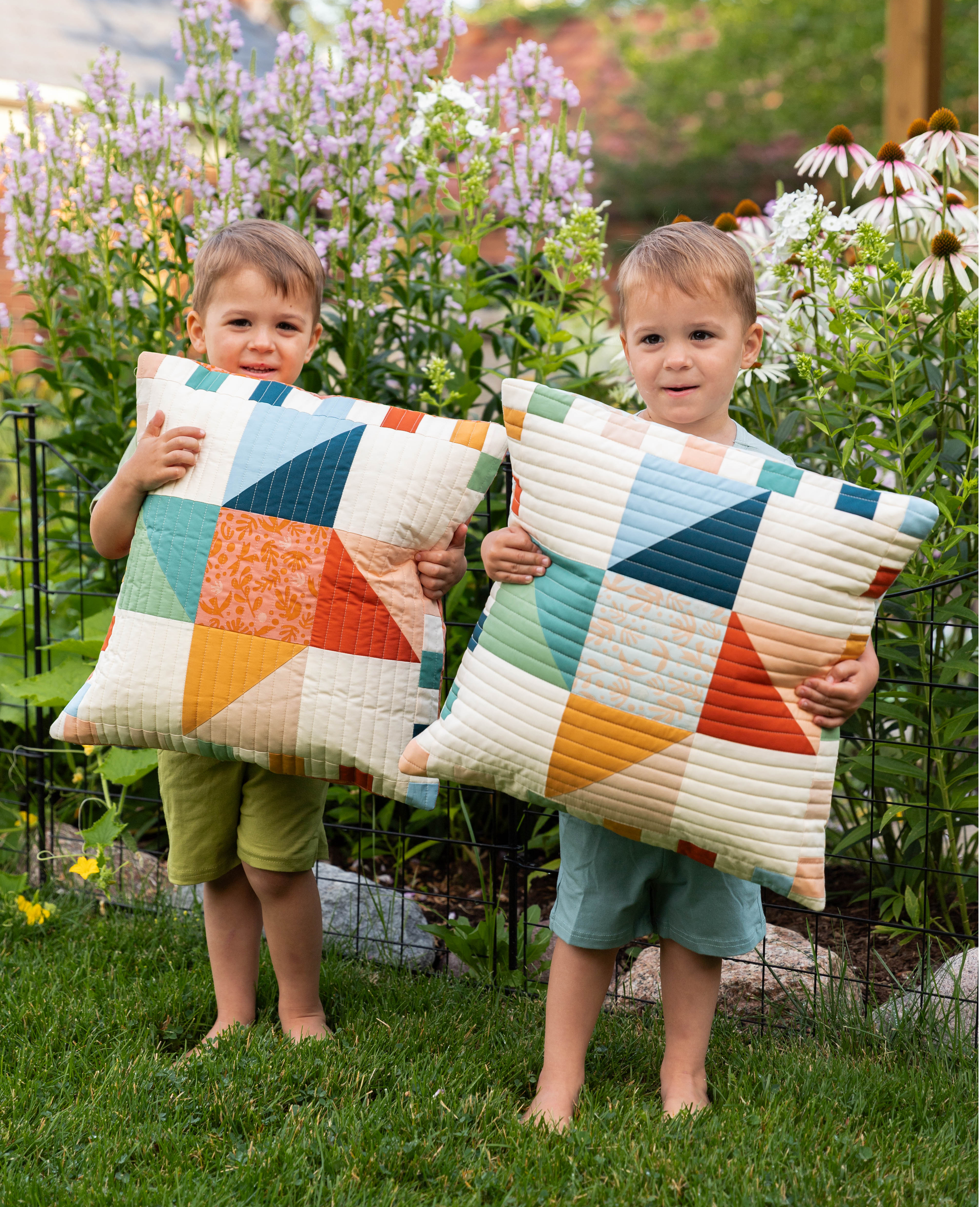

I do nearly all of my sewing and quilting on a vintage Singer 301. It’s a wonderful machine: fast, beautiful straight stitch, powerful and easy to maintain. It was born in the 1950’s…as was I, so we suit each other well.
I use an Elna from 1973. I bought it when I was 16. I spent my part of my inheritance from my grandmother. Still going strong. Every time I have it serviced they try to buy it from me and sell me a new one. 😉
Among the goods transported across the American West in prairie schooner wagon trains,
would have been a treadle sewing machine….and possibly a bin of fabric! You can imagine the need, from clothing to curtains, to baby items and childrens’ toys, and to bedding.
Thanks, Suzy, for reminding us of the value of this wonderful machine.
I inherited my mothers White 600 purchased in 1973 I believe. (She gave me the manual and proof of purchase receipt). I can actually do quite a bit of piecing with it and I like to use it for the occasional zig zag stitch. I use a newer Juki for the fancy free motion stuff, but there is something special about that White machine. Mom said she got it when she first married and used it for everything from our clothes to all the households you described above. I have high respect for women’s history and I will preserve my piece as long as I can. Thank you women from everywhere for your beautiful creations.
Thanks for the history lesson Suzy! I own a Singer treadle machine manufactured in 1902. There was a note in on of the drawers when I got it that says: This machine was brought to Ponderay, Idaho by Lillian McMurtrey in the early 1920’s from Breckinridge Mo.” It is important to remember that the first sewing machines were powered by treadles or handcranks. I sew on this one occasionally but it’s hard because my legs are too long for it. It was definitely built for shorter sewists.
I bet museums around the country would love to have your historic sewing machine in their collection! What a cool thing to own!
My mother-in-law gave me a sewing machine from JC Penney in 1987 before I had my first child. I’d only taken a home ec course previously, so I really had to dig deep to remember how to do even the basics. I used that one for years and made quilts, clothes, and all kinds of projects. Eventually I graduated to the Bernina I currently have, and I’ve sewn hundreds of quilts on it. But I can’t seem to part with my little JC Penney machine to this day.
Although new to quilting, my work as a designer involves using my wonderful Frister and Rossmann 45 every day. I had it in 1970 when I was 16 from new and it has been in constant use for 50 years now. I have it serviced at least once if not twice a year and it is a great machine and friend! Thank you Suzy for the reminder of just how significant the invention of the sewing machine was to women and the development of the textile industry globally.
I learnt to sew on a Singer Treadle machine at school when I was 11 years old. I have recently upgraded my Bernina 801 which I have had for 40 years – has sewn everything from garments to curtains to sleeping bags. I now have a Bernina 770QE but I will never part with my ‘old friend’.
I learned on a 1947 Singer Featherweight, which I fixed up and now use for practically all my piecing. I also have a circa-1970 Elna that my mother bought to modernize, and she let me take the FW to college. (We had to have zigzag and other stretch stitches for all the polyester. Anyone remember “stretch-n-sew”?) The Elna has a nice custom wood cabinet with drawers and fold-out arms, so I just have to keep it. I believe it’s an Elna Star Series Supermatic, and it still works great.
I collect and use vintage and antique sewing machines. My earliest is an 1860s Folsom hand crank. I own several machines from the 1870s: Weed, Wilson, American, Singer and Wheeler & Wilson treadles. The rest of my collection ranges from the 1870s to the present day.
I think of my collection as preserving the machines that our fore-mothers used. Yes, I have the Free Westinghouse that my Mom taught me to sew on when I was 10.
I love reading these comments! I have several old quilts passed down through my grandmother’s side of the family. I love to admire the cute prints in faded colors and wonder who lovingly (or maybe begrudgingly!) pieced them together and hand-quilted them. The church I grew up in used to have a quilting circle where ladies would get together and quilt on one quilt, taking turns having their quilting done by hand. I think those days are gone.
Did anyone else learn as a pre-teen/teenager on a crappy, cheap machine? Ours was a cheaper Singer version from the 70s that gave me fits! I’m glad I stuck with it AND upgraded to a nice machine when I got married. My years of 4-H sewing and instruction from my mom paid off- sewing and quilting are a wonderfully rewarding hobby!
I sew on several machines, but my go-to workhorse is my late mom’s 1949 Singer Featherweight, which she bought on an installment plan as a young working woman. I have since bought 2 more from the 1930’s. They are all-metal, easy to operate and only need occasional cleaning and tension adjustment. I also have had the experience of the repair shop offering to buy my FWs! I learned on this machine when I was 10 years old, and it connects me to Mom every day that I use it.
There is a great book out there, Life at the Dakota, NYC’s Most Unusual Address, the apartment building on Upper West Side and how that name The Dakota came to be. John Lennon made famous as well as others. The financiers were the Singers and the Clarks (of Coats and Clark thread) and from that came the Mizner family (of which various places are named in Boca Raton). They mention quite a bit about the popularity of the sewing machine, its quick rise and fall. Who knew that this iconic building had ties to the beginnings of sewing as we know it.
I have just received the prize of my lifetime! I was gifted with the hand crank sewing machine that my grandmother used, in the Netherlands, to sew for the needs of their family of 16 children! It is still in perfect condition, and stitches a beautiful straight stitch. I have named it “Cornelia”, after my grandmother. I intend to try to sew a quilt on it, but it is so difficult to turn the wheel with your right hand, while trying to guide the fabric thru the needle with the left hand! Seems almost impossible. I was also privileged to be able to visit the home they lived in back in the late 1800’s, and I try to vision where my grandmother might have sat and used her sewing machine in the tiny house the family lived in. Such fun memories, such a treasure. I am blessed!
I started sewing at the age of eight and my first project was a blouse. My first sewing machine was a Husqvarna Viking bought in the early 1960’s. I upgraded to a Janome 6600 in the early 2000’s. I do all my piecing and quilting on this machine. I never thought I would quilt as it seemed too time consuming and boring. But the creative spirit in me gets excited when I see certain patterns. My daughter-in-law offered me a challenge this spring, when she asked if I could make a quilt out of her Grandpa’s leftover plaid shirts that had been made into memory Teddy Bears. I am incorporating the shirt pockets into the King David Crown block and had to expand a 9” block to a 20” block. Challenging but fun as the pattern I found had directions and a picture of the actual size block but no dimensions in the directions. Keeps the brain sharp! I do come from a long line of sewers. My great grandfather owned a tailor shop in Oshkosh WI, and three of his daughters (my great aunts) had their own shop. I do have some of one of my great aunt’s quilt tops and blocks that she hand sewed and am hoping to some day sew them together and make quilts. I also have a pieced crazy quilt top for a summer blanket, from her collection, that I would like to finish and display.
Thank you for the article! My first machine was a Kenmore that my then boyfriend (now husband) gave me in 1988 for our first Christmas together. I use that regularly. It’s been overseas and all over the US for 14 moves. I was recently given a Singer that I enjoy. My mother in law left me her collection of Brother machines (2 for sewing and one for parts she said!). A dear friend and her mother gave me a machine and cabinet from the early 60s, but I confess that I haven’t tried it out yet.
One Christmas my mother had a “heritage Christmas” for the four of us. Each one received something of our interests that connected us to our family. One received a desk, another a camera, another a set of books, and I received a box of quilt tops, quilt squares and paper block patterns with a notebook detailing what each fabrics was. That notebook told the story of the shirts and dresses that made up my quilts and held memories of my family. So priceless! These glimpses of history are so important to connect us to our families.